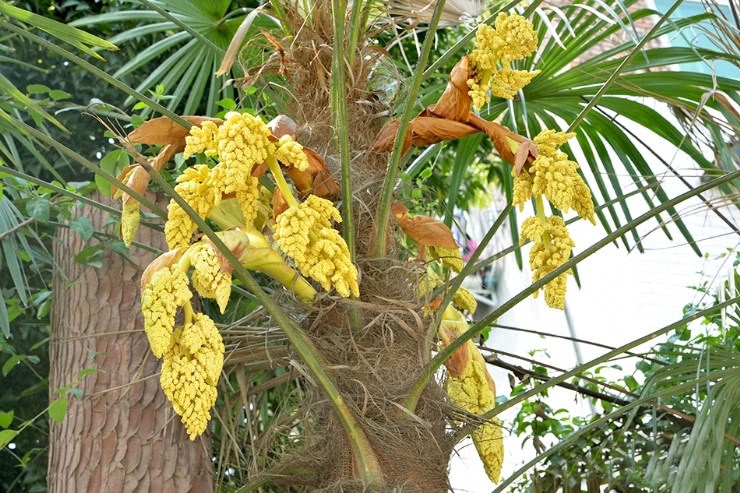Mantis shrimp: see this bayonet? I don't mean just go.

From the release of species Calendar 2019
And
?
day
Want to know how the authors of species calendars routinely escape zhu calendar manuscripts? Don't miss the "big calendar news" at the end of today. (OS: it makes me angry when it comes to this. )
Let's first look at the dividing line of the text.
See the name Oratosquilla, many people may not be familiar with, but when it comes to mantis shrimp, shrimp crawl, wrasse urine shrimp, there should be very few people do not know it. Oratosquilla and lobsters, hairy crabs and prawns we often eat belong to crustaceans, and the most common oratosquilla on the market is today's protagonist-Oratosquilla Oratosquilla oratoria.
Everyone is familiar with mantis shrimp, whose name is Oratosquilla. Picture: Serguei S. Dukachev / wikipedia
In addition to the above familiar common names, Oratosquilla also has mantis shrimp, pipa shrimp, shrimp marbles and many other names, of which the word mantis shrimp is literally translated from its English name mantis shrimp. Oratosquilla is a type species of Oratosquilla (Oratosquilla) of the family Oratosquilla. The real name oratoria is derived from the Latin word oris, meaning mouth, and the genus name is composed of orato and squilla.
Mantis shrimp's Secret Life
Although the shrimp and crabs that we eat as often as we all belong to crustaceans, Oratosquilla occupies a single subclass-the skimming subclass of the soft crustacean. The name Malacostraca, coined by French zoologist Pierre Andr é Latreille in 1802, is easy to mislead people into thinking that the carapace of this class is very soft, but in fact their shells are soft only for a short time after exuviating.
The biggest difference between Oratosquilla and shrimp and crab is that the head and chest are not completely healed. The four pairs of appendages of shrimp and crab are mainly used for walking, while only three pairs of feet are used for walking.
The first five pairs of jaw feet (also known as chest feet) of Oratosquilla have different functions: the first pair of jaw feet are small and not easy to see in appearance, which are mainly used to clean the body; the second pair of jaw feet are the largest and most obvious, specializing in capturing feet like a mantis; the third, fourth and fifth pairs of jaw feet are also small and are mainly used to hold food.
Five pairs of jaw feet with different shapes. Photo: Zhang Xiaofeng
There are only three pairs of steps for walking. Photo: Zhang Xiaofeng
Outside the breeding season, most Oratosquilla like to live alone, but sometimes several Oratosquilla live in the same cave, perhaps because the house price at the bottom of the sea is too high (fog). The largest body length of male Oratosquilla can reach 18 cm, and the female is slightly larger than male, up to 18.5 cm. During the breeding season, Oratosquilla likes group activities, which can not only increase the probability of finding a mate, but also increase the frequency of mating. After mating, the female will soon be able to lay eggs, while the male will leave the female to find the next mate.
When spawning, unlike the usual back-to-belly-down posture, the female crayfish will lie on its back in the cave, lift its head and tail slightly, and hold the eggs between the 6th and 8th segments of the chest until the eggs hatch.
The morphology of the newly hatched Oratosquilla is very different from that of the adult, which is called pseudoflea larva, which needs to go through 11 stages (once exuviated skin of Oratosquilla is called stage 1) and about one month before it can become young shrimp. Oratosquilla does not need to feed until the second stage, but hides in the cave and lives on yolk nutrition. It is not until the third stage that the young shrimp begins to float away from the cave camp. It was not until the 11th stage of the larva that the cave camp began to live in caves. The life span of Oratosquilla is generally 1 to 2 years.
A veritable undersea overlord
Oratosquilla is a ferocious carnivorous marine animal. They are not good at swimming and prefer to live on the bottom of the sea covered with sand, burrowing and hiding in the sand, showing only their tentacles and eyes, waiting for opportunities to hunt small animals passing by, and when there is not enough food, they will also take the initiative to come out of the hole to look for food.
A covert observation of Oratosquilla. Picture: alchetron.com
The eating habits of Oratosquilla are so varied that they don't let go of anything they can eat, from small fish and shrimp to plankton. The trapping foot is their prey weapon, and the teeth and thorns on the foot can pierce the prey and kill them, and then hold the food in their mouths with the third to fifth pairs of jaws. Therefore, most of its jaw feet are near the mouth, which is the origin of the name Stomatopoda.
Oratosquilla preys on peacock fish. Photo: Zhang Xiaofeng
Eating Oratosquilla. Photo: Zhang Xiaofeng
Incidentally, in stomatopods, captive pods evolve in two major directions: Spearers and Smashers. Most of the oratosquilla have piercing feet like Oratosquilla, which are most suitable for preying on faster prey. It has also been observed that when facing some shellfish, Oratosquilla will also use the way of catching foot to attack, but at this time the capture efficiency is certainly not as efficient as hammering. Oratosquilla with hammering feet belong to the family Oratosquilla Magna. Their knuckles and front segments become thicker and can easily break shells like two small hammers and can also break the hard shell of crabs.
Oratosquilla catches feet like a mantis. Photo: Zhang Xiaofeng
Hammering capture foot. Photo: Zhang Xiaofeng
The most familiar is you at the dinner table.
Oratosquilla is famous all over the country for its wide distribution and delicious taste. Fresh shrimp cricket must be braised or steamed to be the most delicious, of course, salt and pepper or spicy food is also very delicious.
Steamed Oratosquilla. Photo: cat curry / bean and fruit delicacies
Mantis shrimp with salt and pepper is also delicious. Picture: moon Jingjing / bean and fruit delicacies
The most troublesome thing about eating shrimp cricket is how to peel off the shrimp completely without being stabbed by its thorns. The popular method on the Internet is to cut off the head, foot and tail of oratosquilla with scissors, insert it with a chopstick and turn it around to take out the meat. My personal habit is to first remove the head, then remove the thorns on both sides of the legs and tail, and then tear the shell open little by little from the opening in the head. As long as the shrimp cricket is a fresh individual, you can get a very complete piece of shrimp.
In addition to this troublesome way of eating, some coastal areas in the north also have the habit of breaking shrimp and pork into dumplings. In addition, Japan even eats cricket sashimi.
Japanese cricket sashimi and sushi. Picture: tabelog.com;Lombroso / wikipedia
Although many businesses claim that the oratosquilla they sell are artificially propagated, as far as I know, the artificial reproduction of Oratosquilla is still in the experimental stage, so almost all of the oratosquilla we eat are caught from the wild.
However, the good news is that Oratosquilla grows rapidly and has a strong ability to reproduce, and the current fishing intensity does not put too much pressure on them. on the contrary, the gradual depletion of fishery resources has reduced the number of fish that were originally crustacean natural enemies such as Oratosquilla. Let Oratosquilla live more moist. The breeding season of Oratosquilla is from April to September every year. People can eat oratosquilla with yellow meat almost all the year round. Friends who like to eat must not miss it!
This is the 253rd article in the fourth year of the species calendar, from @ Zhang Xiaofeng, author of the species calendar.
If you like him, you can still follow him.
Bees talk.
ID: fyfy_nature
Learn about insects and marine invertebrates
Big news on the calendar!
Before revealing the true appearance and theme of the new calendar
Calendar Niang wants to give everyone a chance.
Learn more about the birth of the new calendar
It was invited the other day.
Editors and painters come to take the class.
Accept questions from everyone (ti á o) (x questions)
Today's shift is the species calendar.
Great writers who write with great spirit.
They answered the question that everyone was curious about.
Q: what are the most common reasons for dragging drafts by authors?
Type 1
"I'm picking up shit in the mountains. I'm running out of electricity. Go back and give it to me."
Tpye 2
"I think I may be terminally ill and can't write."
However, he was alive after the manuscript was handed in.
Type 3
"at the company, I'll give it to you."
"on the subway, I'll give it to you when I get back."
"on the bus, we're almost home."
"in the museum. Anyway, I'll give it to you at home. "
A day later.
Calendar Niang: is it big enough to get home? Where's the big manuscript?
Type 4
"my daughter is ill."
"my second uncle is ill."
"my neighbor is ill."
"my hamster is sick (╥ sick ╥) o"
Tpye 5
"I'm writing it. I'll give it to you in a week."
(a week later)
"Don't worry, I'm really writing it. I'll give it to you in three days."
(three days later)
"it's almost finished! I'll give it to you by three o'clock in the afternoon! "
(3: 00 p.m.)
"the office network is not good. I'll give it to you by 7: 00 in the evening!"
(7: 00 p.m.)
"I seem to have heatstroke _ (: heat" ∠) _ "
Type 6
"it's too hard."
Type 7
"in the past, Calendar Niang and I all told me that it was a false dead line date. I thought what you said this time was also false."
Editor vb: heh.
Tomorrow's notice
Tomorrow is the last day of the question and answer session.
The person on the shift will be
@ Calendar Mother
Come on, throw all your questions at me.
In the previous question and answer session, Calendar Niang invited @ Lao Cat, Chief Editor of species Calendar, and @ Li Liang, original painting of species Calendar. Miss the children's shoes with wonderful answers. Poke their names to catch up!
Calendar Niang today's avatar
Sparrow-tailed mantis shrimp of the family Shrimp
- Prev

Dad, why are you hiding here? Still have. My toy?
Recently, a male colleague is always secretive. He doesn't come home from work every day. He doesn't know what he's looking at. He always posts some inexplicable photos in his moments: in the spirit of gossiping and caring for colleagues, Ben AI looks in the dark.
- Next

The millet that grows on the tree can be eaten raw and cooked. Fried meat is a rare food in the north.
There are a lot of flowers, fruits and trees naturally growing in the countryside. At that time, several of our friends always like to run on the mountain roads in the countryside and climb to the trees to play. The memories left to me in my childhood are very deep. Although we are small.
Related
- Wuhan Hospital Iron Tree Blooming Result Was Instantly Frightened by the Gardener Master
- Which variety of camellia is the most fragrant and best? Which one do you like best?
- What is the small blue coat, the breeding methods and matters needing attention of the succulent plant
- Dormancy time and maintenance management of succulent plants during dormancy
- Minas succulent how to raise, Minas succulent plant pictures
- What are the varieties of winter succulent plants
- How to raise succulent plants in twelve rolls? let's take a look at some experience of breeding twelve rolls.
- Attention should be paid to water control for succulent plants during dormant period (winter and summer)
- Watering experience of twelve rolls of succulent plants
- Techniques for fertilizing succulent plants. An article will let you know how to fertilize succulent plants.

